My thoughts and impressions after a month in Japan | part 3
Now come some of the 'It was the first time for me to... '. What are the differences between our customs such as taking a shower and using sauna? Food and drink? What was the Japanese kitchen like? Could you survive? Do they eat lots of fish? Wasabi? The green tea? The Japanese shopping centres, stores and prices? More on these myths and legends in this text! If you missed them, you can read part 1 and part 2.
8 Taking a shower and sauna... together
In some hotels I found out that the space for showering, hot springs (onsen) and using sauna was common. In other words, you are taking a shower or bathing naked with 10-20 more naked men (or women). The shower rooms for both men and women are of course separated. This was true for the traditional hotel we spent one night at.
I found about this 'activity' during my days in the camp. Apparently we were supposed to go one day to the "traditional" hotel and baths called Inunakiyama Onsen (more about it later). Of course, except for our friend from Finland where bathing in sauna naked in a group of friends and family is normal and they are used to it, but for the the rest of us was something that we do not do regularly or actually not at all. In Croatia we do not do it. Now the funny part. Day and night before going to Inunakiyama Onsen we spend them at another traditional hotel (and there happened some legendary stories that include spiders of a size of a tennis ball, more about it - later). And they had this kind of shower rooms where privacy and being invisible to the others was not possible. My Turkish friend and I were discussing this (in Turkey it is also not usual that men go shower together) and concluded 'So... tomorrow we gotta break the ice"... but 10 minutes later we ended up downstairs in the shower room thinking it would be better to get rid of this uncomfortable feeling.
The first time was very strange, just the moment when you 'remove the cloak and shine' and to do it the best thing was just 'oh well, f____ (rude word) that... let's go! ' and it helps. After first seconds of laughing because both of us were just looking straight and thinking how to get to the shower quickly and back to towels. But then you realise you do not care any more about anything. It is very simple. The other day it was much easier although except for 2-3 of us from the camp there were 15 adults and old guys from the hotel we didn't know but still you just go and don't care.
After this experience (and many other in Japan) I had no more problems to do anything like this, or feel ashamed to do it, back in Croatia. Luckily for me, since I had to take off the glasses I could not see the details which made it easier for me to endure than for the others. In the end, you do not care much... you come, sit, take a shower, return for the towel, put on your clothes and leave. Breaking the ice was the thing to do.
In conclusion, there is nothing to be ashamed of and since in the West this has much to do with religion we look at it differently. In Japan it is not a case. They don't have religious reasons that should stop them from doing it and at least they avoid socially awkward situations. But I do not know how this would work here and how long would it take to become normal. Additionally, I somehow got a feeling that they care much more about the hygiene than we do here (on average) so maybe it's better that things stay as they are until the mentality changes.
Since it was really not a good occasion to take a photograph of the situation I hope you will understand me why I have nothing to post here. Also I am not sure if it is against the rules. You can Google 'Japan onsen / hot springs'.
9 Food and drink

This was definitely one of the hot topics when I got back home. And actually not only questions from Croatia or abroad but also while being there in Japan. Do you like the Japanese food? Did you like it? What is the food there like? Are you going to starve? Are you going to die if you try...? and many others.
For the first thing, I eat everything. And by that I mean literally lots of sorts of food. I still have no clue about the names of the half of the things and more as the name of everything was more or less in Japanese and many things from the menus were pretty new for me. Sometimes I had no clue what I was actually eating. And also didn't want to know when the taste was suspicious. The same goes for my non-Japanese friends. There were some cool things, very delicious, oishii ne!, but sometimes the taste was 'interesting' as I was not used to it... or my stomach.
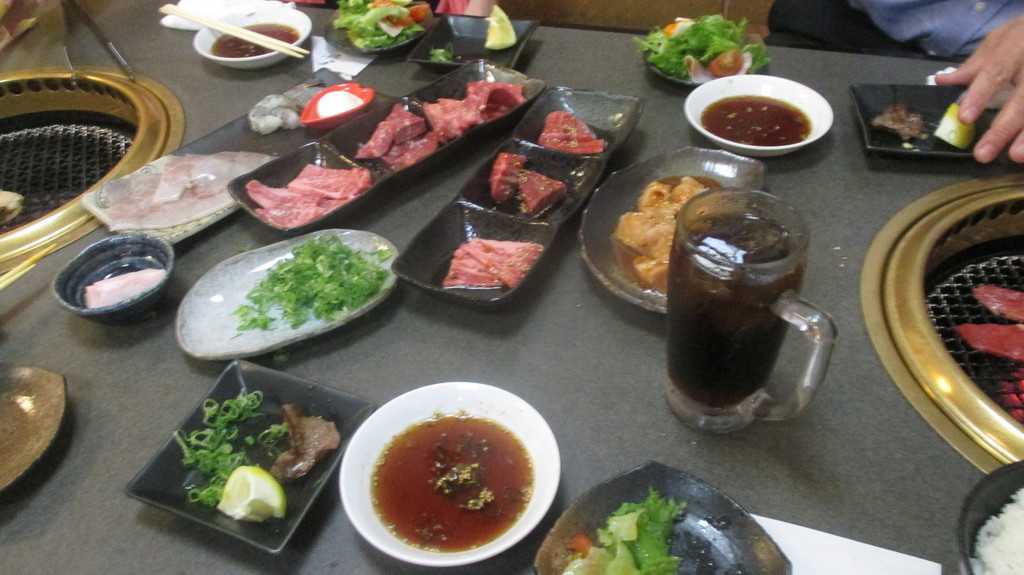
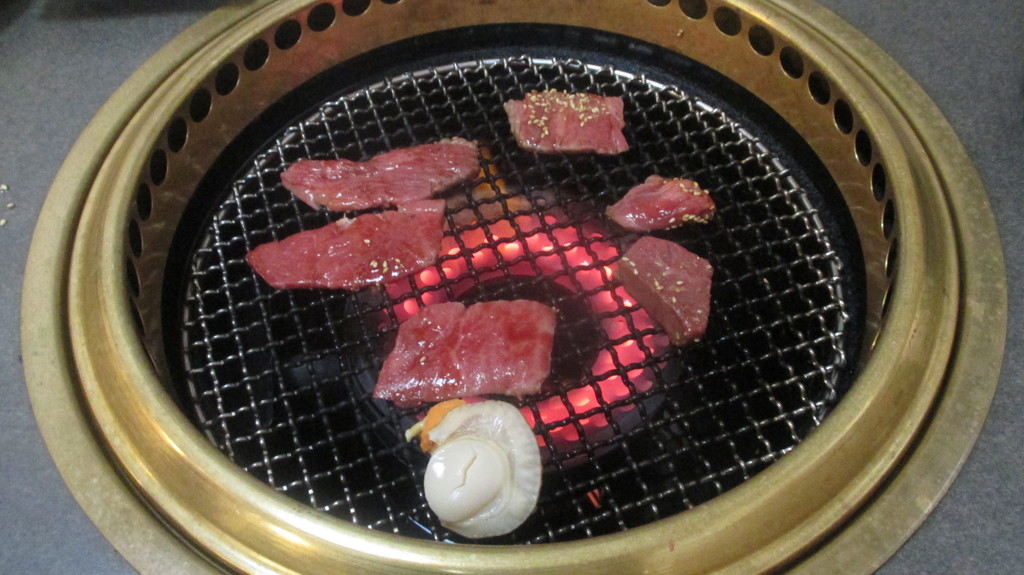
In general, the Japanese do like of course rice, fish (different sorts prepared in different way), fruit and vegetables. As said, depending on your personal taste or more importantly - being used to it since childhood maybe, may be totally awesome and you enjoy it fully... or your stomach is going to twist. What I noticed is that in Japan you eat a bit of everything and don't put too much on the plate, in contrast to Croatia where we like to put tons of something on the plate but without much variety. And still I was suspicious that I would be hungry later but I was not. Now when spending my time in Austria and have to be careful with my modest budget to survive - I try to eat a bit of everything which takes more time to prepare but it's healthier and I do not feel hungry.
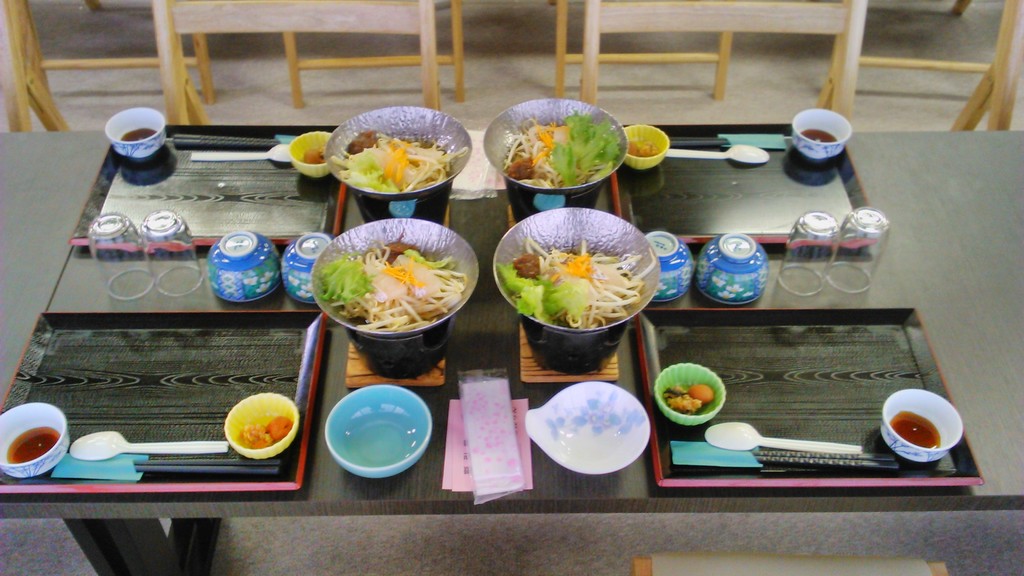
I was setting the dinner table at Anchin Restaurant.
They like to use many sorts of spice and sauces. Soya sauce for example is very good. Sushi is just one of numerous dishes you can eat there (in general, it is normal or sour rice in combination with something else).
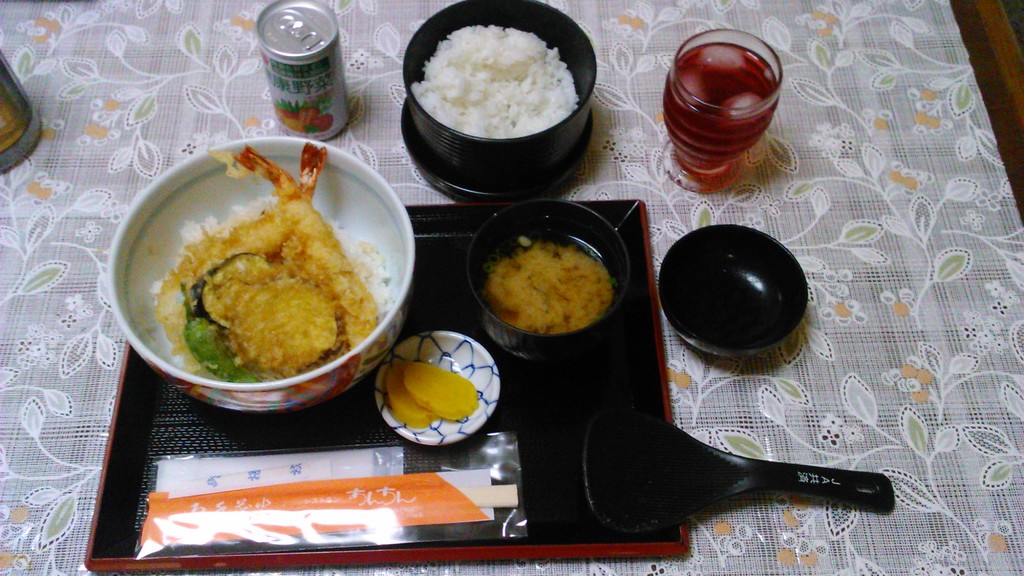
Wasabi! You don't eat it directly! But put a bit (like the size of one or two green peas) into a sauce in another smaller plate, you mix it and then dip the food into it.
Oh, I almost forgot one of the main things. The chopsticks! They are used practically all the time. Some asked me how do they eat the soup with the chopsticks? and the answer might be - you use the chopsticks to eat all the other ingredients such as 'spaghetti' (not actually but called soba), vegetables, meat... everything except for the fluid part which you simply drink. Now, of course they have all the other cutlery but prefer to use the chopsticks. There are several versions of them, from those that can be used one (the cheapest and maybe eco-chopsticks) and then get recycled... to those which are made from better material and can be washed and used for a much longer period. Everything you buy (like the food in boxes you need to warm up or just bake) is prepared in order to be available for eating with chopsticks.
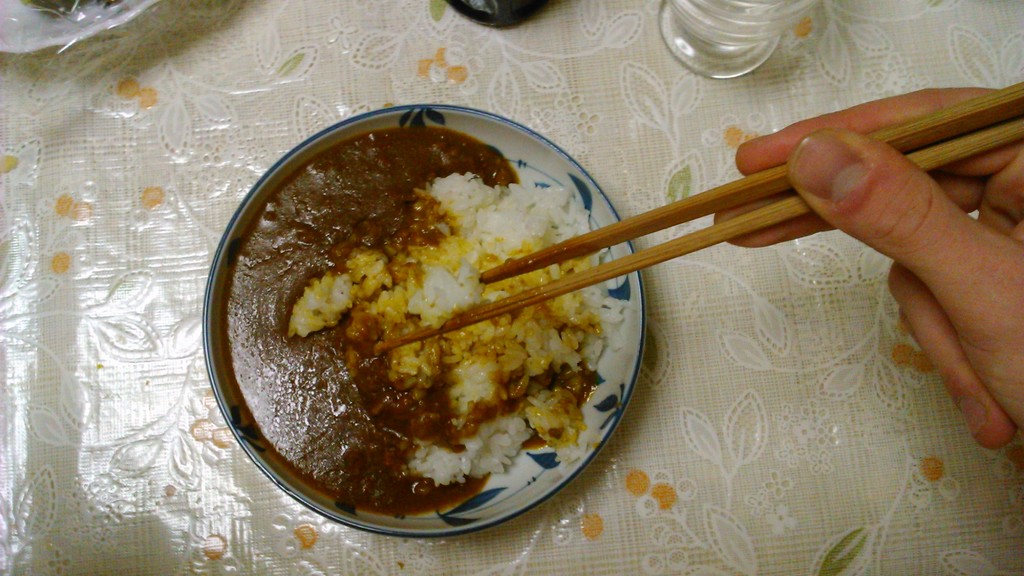
I can also add octopuses, crabs (shrimps), chicken and pork as being popular next to the fish. Maybe unusual for me and some is that they baked (not cooked, baked) the green salad.
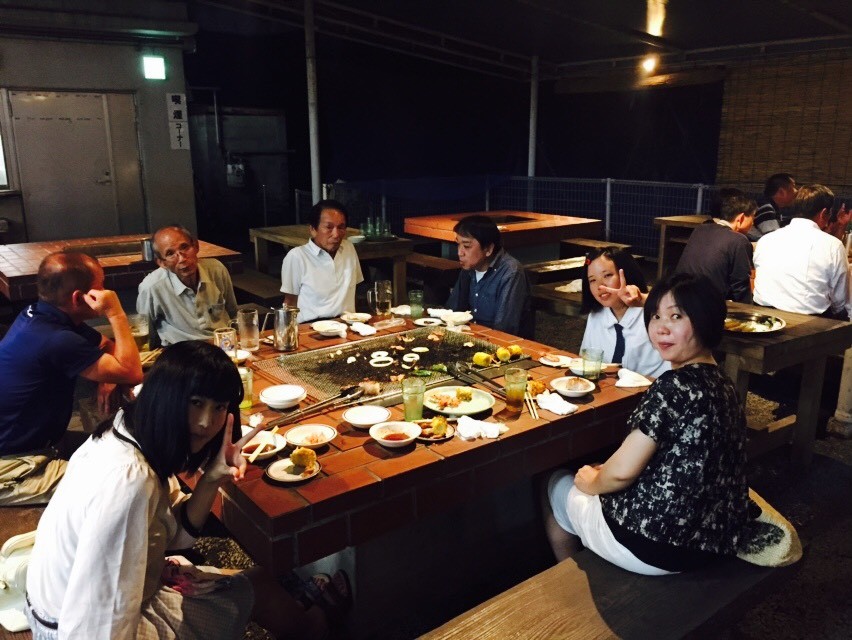
Not rarely did it happen they were mixing things we would never do and vice versa. Something that I really liked was 'so-so' for them... and what they found very delicious was for me 'huh, interesting, thanks, I'll take more next time. ' Fresh meat was at times very difficult for my stomach, especially first few days but you get used to it eventually... or you have to force yourself to eat. And when the food is very hot (atsui) then it's the best. At least for them. Again, had to wait some minutes so that it does not burn my tongue. So pay attention when going to the restaurant or for the lunch at home with your friends! Grilling is also very popular, not just at home but at the restaurants. More about them later.
And yes, things I have heard about Asia and not eating bread is.. both true and not. I don't remember seeing any bakery out there in the streets. The bread is being served much alike buns or toast, and cut bread practically never.
The green tea... huh, interesting...
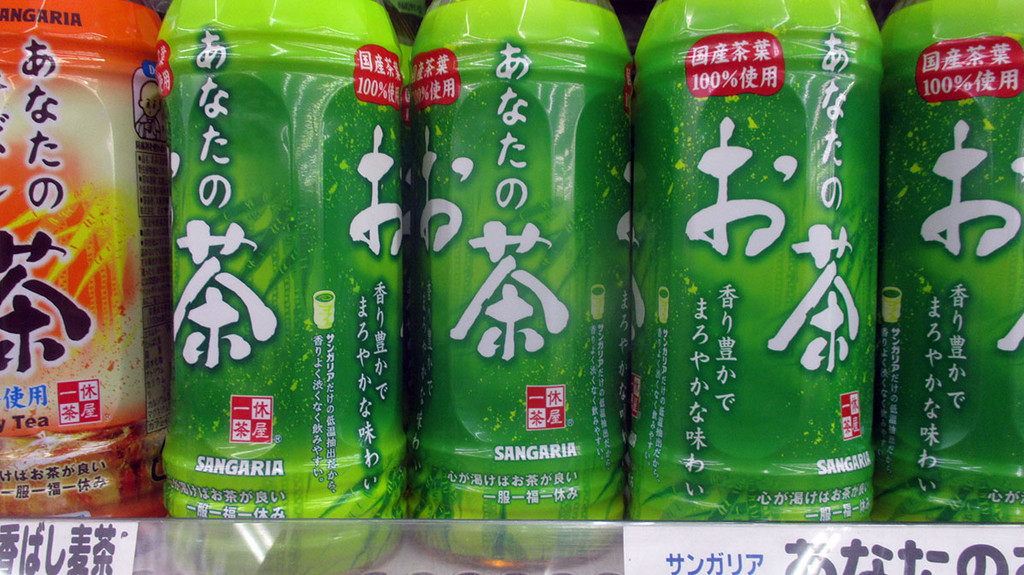
One could write books about the food and dishes. Any way, they do already exist and my job is not dealing with the food. So a few words about drinks and drinking habits. First thing that is of national importance and that no foreigner will ever forget is the green tea. The green tea tastes... well... terribly for me! I really tried hard but I guess there are two kinds of people in this world. Those who like it, adore it and can drink bottles of it a day... and there's me and other douchebags who run away or will die of thirst. I believe again you have to get used to it from childhood, otherwise might be difficult. Another problem (okay, I admit) is that we (I) are used to add lots of additives such as sugar or lemon or honey etc. I tried that even in Japan with the green tea (to their surprise and shock) but it did not help me much. Speaking of that I was probably the first one in the history to ask after the tea ceremony for a bit of sugar to put into it. They always wondered at home and took photos or videos of me while putting sugar or honey into the tea. Luckily, however, I was not alone. When in the camp the majority of the non-Japanese friends had the same problem.
You can buy this tea bottled in the shops!
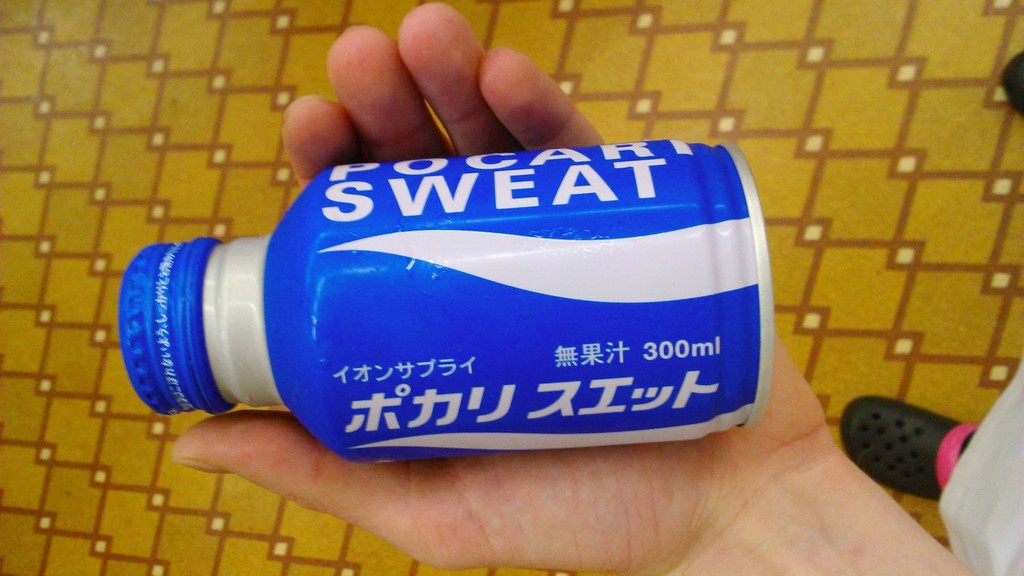
On the other hand the normal things do exist too! I tried some juice or water called Pocari Sweat and it is very delicious, I could say my favourite drink from Japan! I tried it for the first time on my second day in Japan in the restaurant and it was also the last thing I bought in Japan minutes before entering the airplane at Osaka Kansai Airport. Talking about beers there are Kirin and Asahi as the most popular ones. They were often advertised along with the famous baseball players.
Interestingly though, non-adults or non-mature students do not drink alcohol and they don't think of it at all. At least they were very good at disguising their intentions. But I doubt it. I asked several high school students and they said students don't drink alcohol in Japan as we do it here. Even I, though being an adult according to the law, was only given alcohol-free beer (but the adults drank far too much and were very *happy*). Sake is weaker than rakia or shlivovitza. The adults or seniors like to drink beer or something stronger. Coffee is also an option but the tea is of course much more popular (except for this unfortunate green tea they have many others naturally where you can put the lemon or honey to improve the taste). I still find it very funny when they were not very fond of the idea to share something alcoholic with me as they were afraid it could be 'dangerous' for me to get drunk... but then after ordering me a lemonade or giving alcohol-free beer they became drunk so much after a few glasses of something.
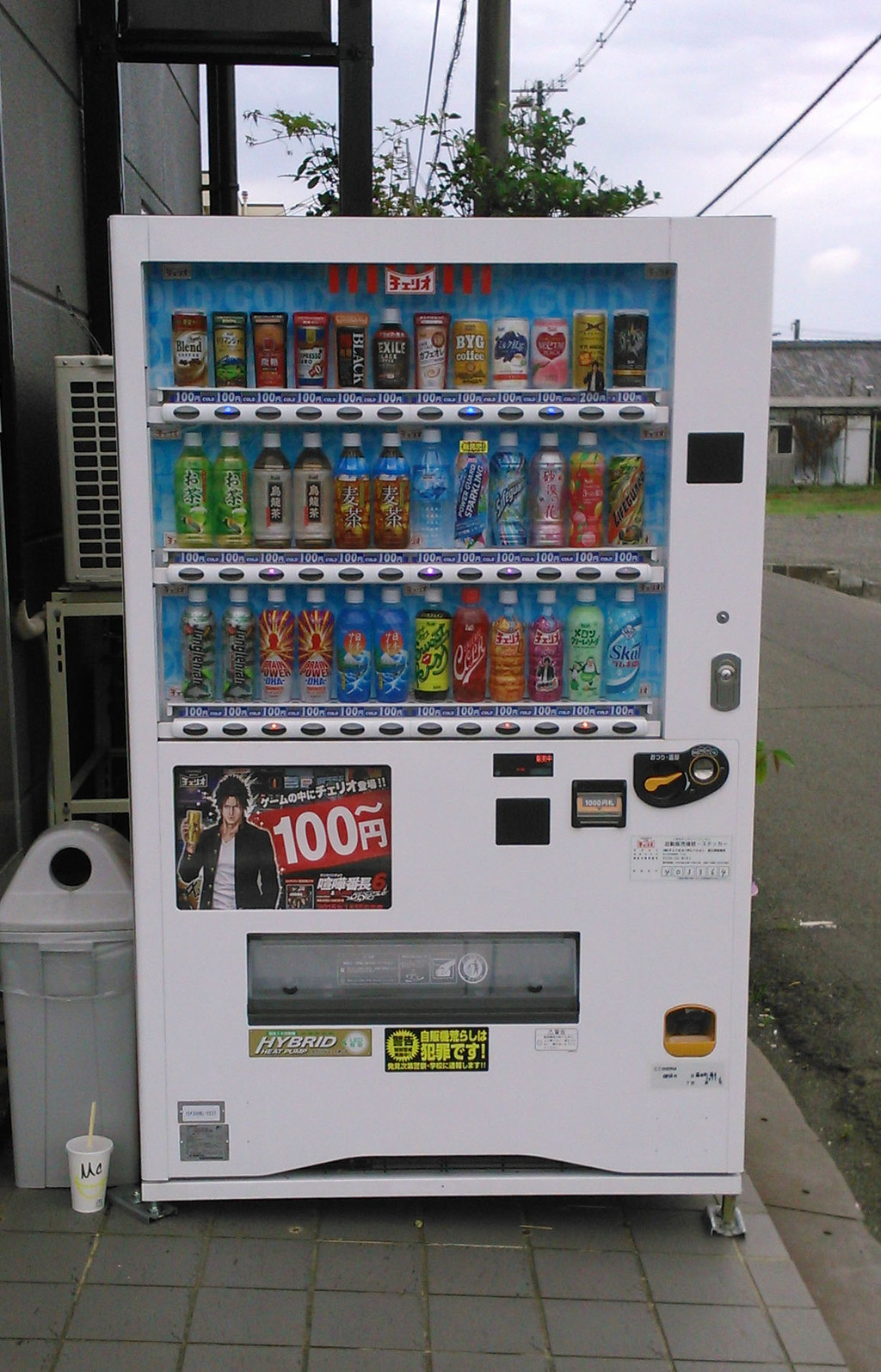
I already mentioned earlier that you can find big vending machines selling drinks in the streets!
10 Stores and prices
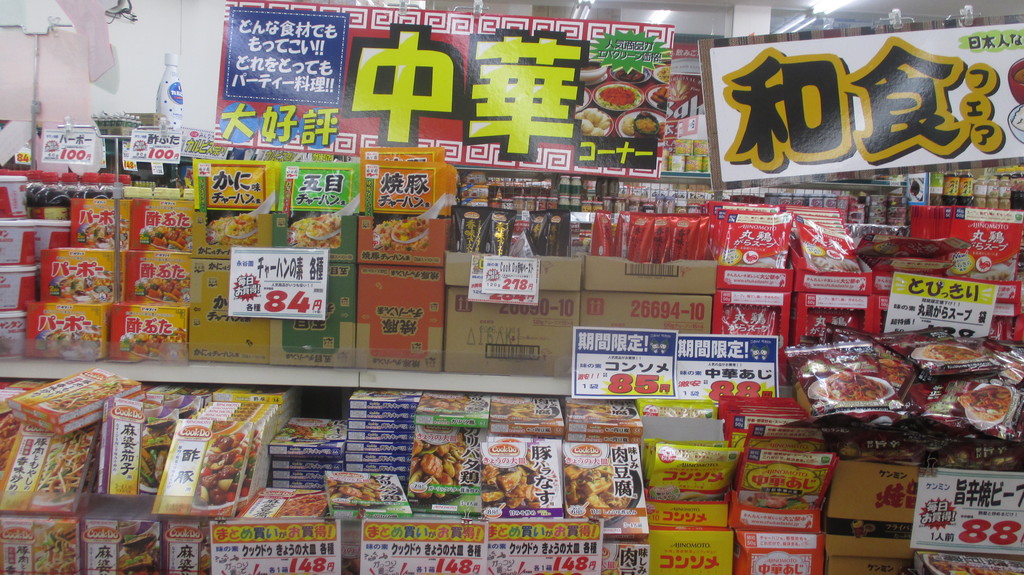
From the smaller stores that remind you of gas stations there are Lawson and Family mart everywhere. I used to go there a lot when alone on the bike around the town to buy me some cookie, juice or anything else. Even once tried to buy some brushes for the calligraphy (and had to use dictionaries and hands a lot to explain what I want). They are not very big but have the basics. The prices are also okay.
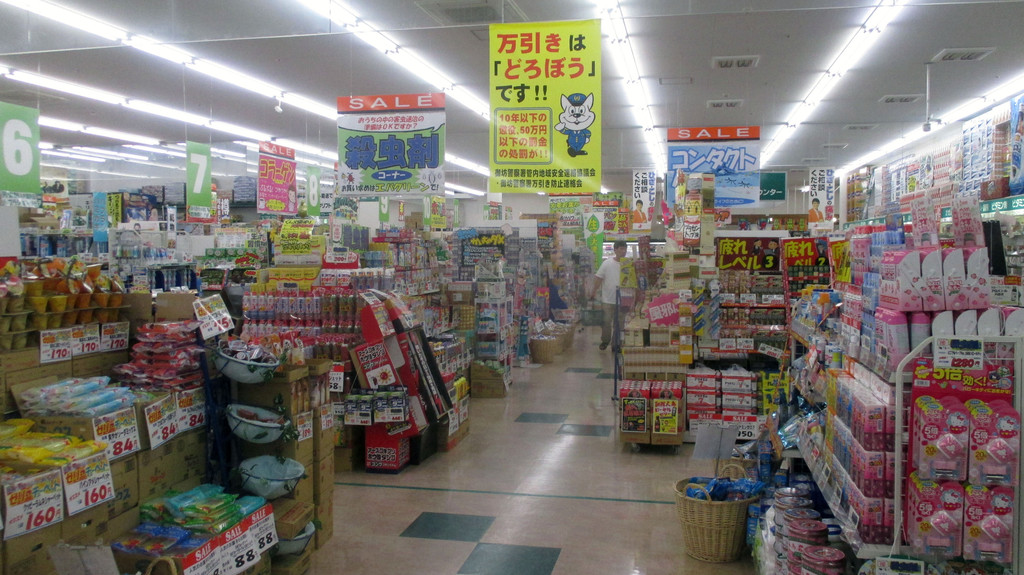
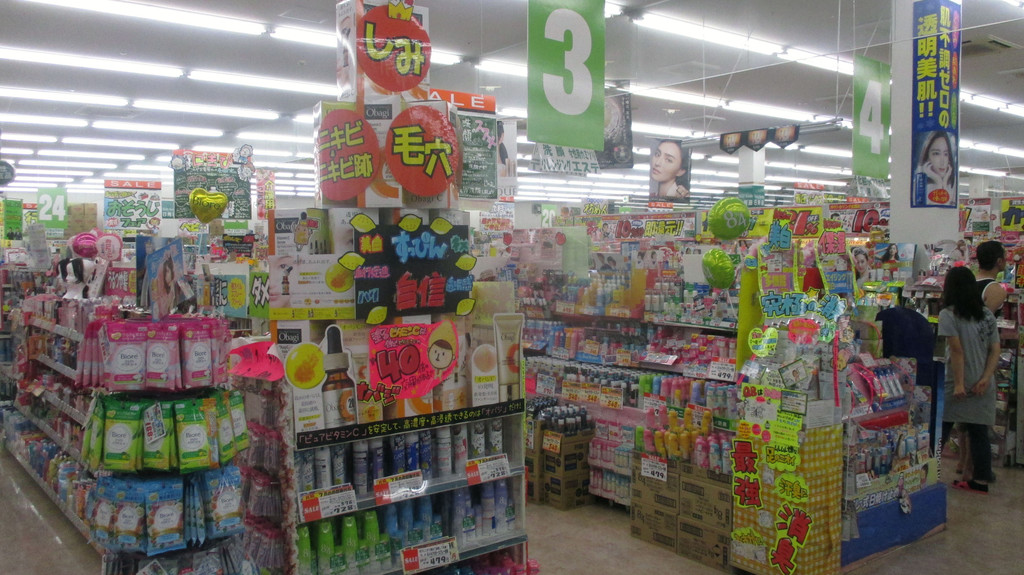
One of my favourites though was the store called Daiso where there is always a part with the goods and articles that cost 108 yen (maybe a dollar, less than a euro) per piece! The first time I saw it I thought I was crazy when recalculating the prices from Japanese currency to Croatian ones. I had to use the calculator ten times before accepting that I can pay less than a euro for the children's books, simple games and similar stuff. Then I decided it would be a shame to leave Japan without buying a bit more stuff then I initially planned (as being warned that it is very expensive there). But you always find something affordable for the good price. So, not to feel guilty later on my flight back home, I spend maybe 20 euros on more than 20 articles, didn't have space in my backpack for all of it! But I felt very happy. I would have bought more if I was not scared of the baggage weight limit on the airplane, I didn't want any problems with it.
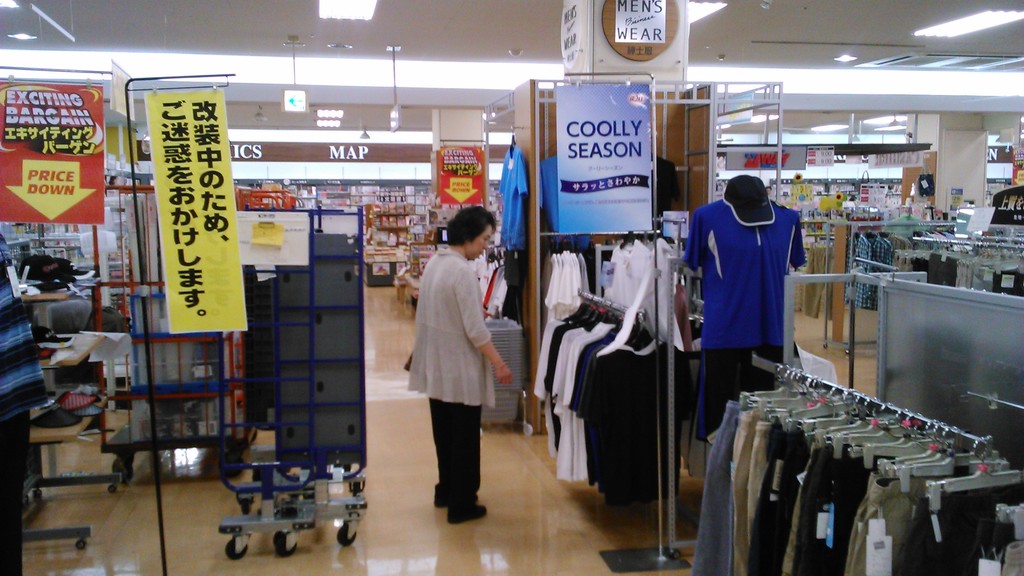
Prices in general can be for some things much much cheaper than even in Croatia (and even more for the Western Europe then) but some much more expensive. The books, especially those recycled ones, were very affordable, sometimes even as much as half of the price in Croatia, so I couldn't miss the chance to buy few simple books in hiragana with interesting visuals that helped me later at learning Japanese. And the shops look very colourful from the inside, mostly pink-yellow colours prevail. And it was difficult for me to go around and find stuff as it was all with big kanjis and I understood nothing.
Gomen nasai, your Visa Electron card cannot be used
On the other side, my Visa card was rejected practically everywhere in the town. I read a bit about it before my trip but didn't really believe that it happens. So, what I learned from personal experience is that the Japanese society is pretty much cash-based society and as a rule the cards are not being used in the stores (in the smaller ones, supermarkets sometimes and even had problems in one shopping centre while buying several Dragon Ball Z magazines and manga). After a week and a half I had no other option but to ask my host grandma (and there had to be lots of creativity to understand each other) that I have to go to the bank to solve the problem. I draw on the paper 3 things: my card > cash? and hoped they will get it as they didn't speak English and I tried as much as I could with my broken Japanese. Luckily, one of the Lions friends who speaks English came and tried to solve the problem. Even then nothing happened. I was a bit desperate now as I didn't know how to use the yens on my card and I will need them for the camp later.
But there is always a way and thus we headed to the post. One guy showed me the ATM which also was available in English and apparently we didn't know we were trying to do the wrong steps. In the end we succeeded in printing the yens that I can feel them in my hands. I guess we could have solved it earlier at the bank if there was an option in English or that they knew we had had to press on 'withdraw cash'. Still everything solved. And to repeat from before - they all tried very hard to help me with this and I felt bad since I didn't want to cause them much trouble with this and stress.
Some of the prices from the shop in euros I took notes of or checked on the photographs:
So when you are going to Japan make sure you have cash with you, don't rely only on your cards!
Photo gallery
Content available in other languages
Want to have your own Erasmus blog?
If you are experiencing living abroad, you're an avid traveller or want to promote the city where you live... create your own blog and share your adventures!
I want to create my Erasmus blog! →




















Comments (0 comments)